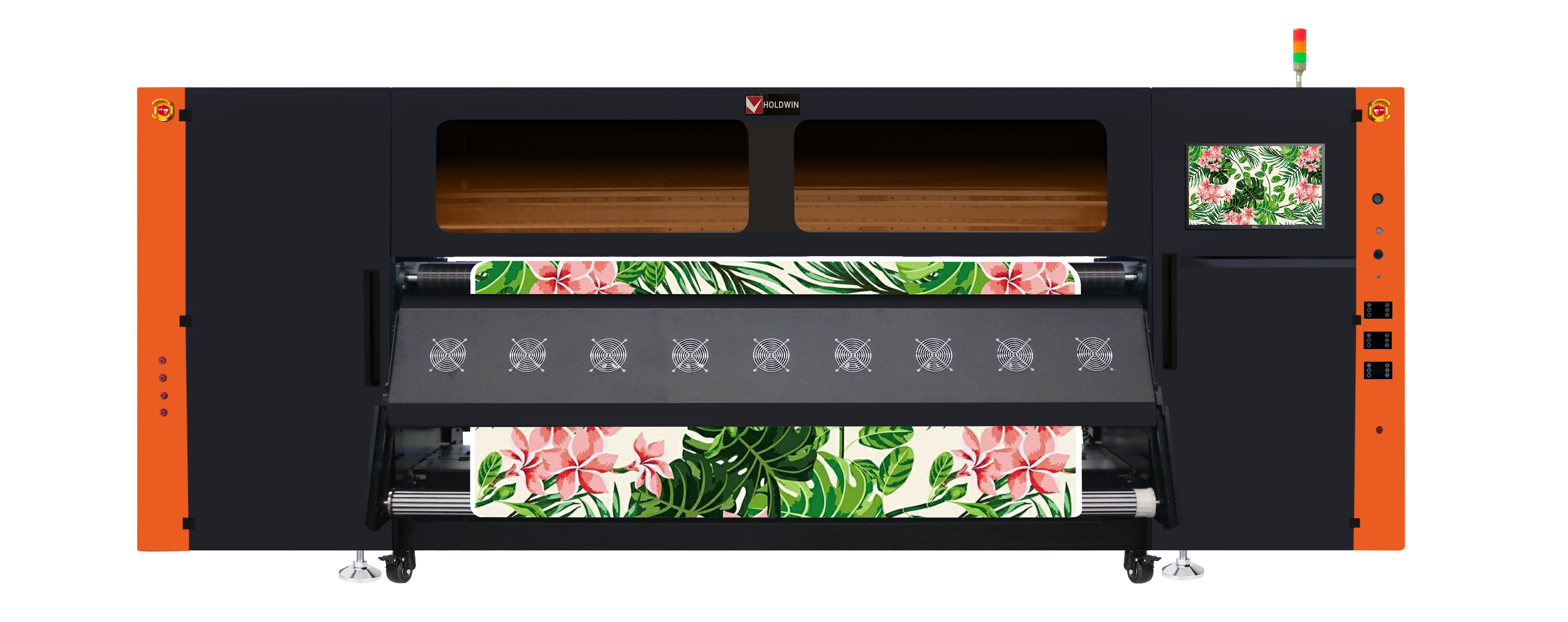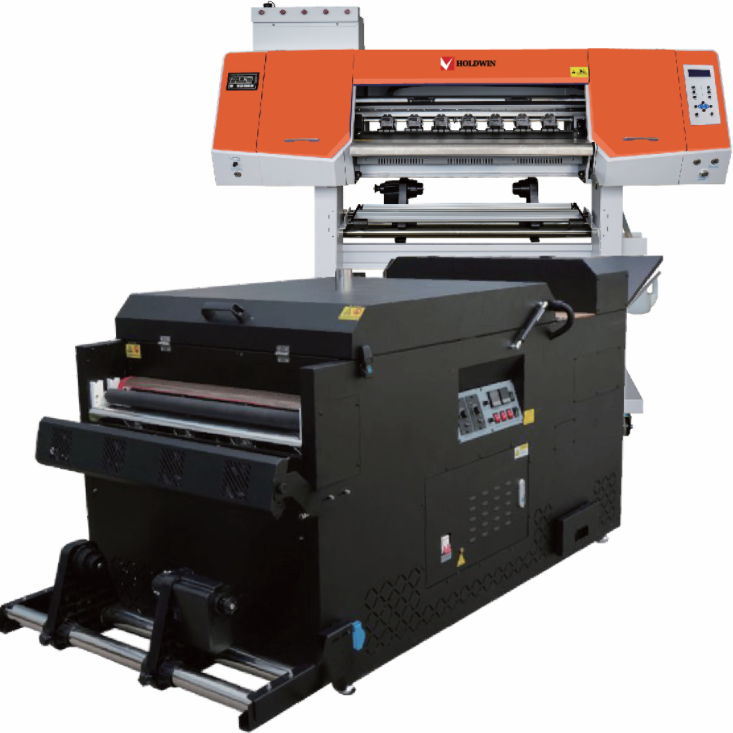
The digital printing industry has made significant strides in recent years, with automation and intelligence emerging as critical drivers of innovation. As the global textile market grows, so does the need for more efficient, precise, and adaptable digital printing solutions that can meet the demands of textile manufacturers, fashion designers, and print technology enthusiasts. HOLDWIN, committed to advancing textile printing technology, is at the forefront of this evolution, offering agile, customized, and globally acclaimed solutions.
This article explores the latest trends in automation and intelligence within digital printing equipment, examining the technologies and strategies shaping the future of textile printing. As we delve into topics such as smart color management, machine learning integration, and automated maintenance, we’ll look at how these advancements are streamlining production, enhancing quality, and ultimately transforming the digital printing landscape.
Automation in digital printing involves applying robotic and software-driven processes to simplify complex workflows. Automated systems in digital textile printing are designed to optimize the consistency, speed, and accuracy of print jobs, which is vital for mass production in the textile industry. The latest automation features include automatic material feeding, roll-to-roll printing, and the ability to perform self-diagnostics, which collectively minimize human error, reduce labor costs, and improve operational efficiency.

Achieving vibrant, consistent colors across diverse textiles requires advanced color management systems. Integrating AI and machine learning enables digital printers to self-adjust based on fabric type, color density, and ambient lighting. This level of intelligent automation ensures color consistency, print accuracy, and efficient ink usage, particularly in multi-layered applications like DTF (Direct-to-Film) and UV printing.
With AI-driven quality control, printers now feature real-time monitoring systems that detect defects and make automatic adjustments to maintain print quality. These smart features improve product quality while reducing waste, making digital printing a more sustainable option for manufacturers.

Predictive maintenance, powered by machine learning, has transformed the maintenance landscape of digital printing. Sensors embedded within digital printers collect data on various components, such as ink levels, nozzle health, and motor performance. Machine learning algorithms analyze this data to predict potential failures before they occur, reducing downtime and prolonging equipment lifespan.
For example, HOLDWIN’s advanced maintenance systems use predictive analytics to alert users of potential issues, ensuring that textile manufacturers can operate with minimal interruptions. This technology not only saves costs associated with unexpected repairs but also supports a more reliable and efficient production cycle, crucial for maintaining competitive lead times.

Robotic integration is another automation frontier in digital printing, especially in tasks like textile handling, quality inspection, and packaging. Robotic arms, for instance, can feed textiles into the machine, check for quality consistency post-print, and sort printed textiles for packaging. These robotic enhancements, which work seamlessly with HOLDWIN’s digital printing technology, eliminate repetitive manual tasks, reduce human error, and ensure consistent product quality.
By integrating robotics into textile printing operations, HOLDWIN provides an end-to-end automated workflow that empowers manufacturers to scale production efficiently. For high-demand applications such as customized fashion pieces, towels, and carpets, this robotic-driven approach ensures that every product maintains the same high quality, even at high production speeds.
One of the unique advantages of automation in digital printing is the ability to provide customized solutions efficiently. With intelligent software, digital printers can adjust designs, colors, and layouts automatically based on specific customer needs. For instance, HOLDWIN offers systems capable of handling personalized designs without sacrificing production time, allowing textile manufacturers to cater to the growing demand for unique, individualized products.
Incorporating customer preferences into an automated workflow supports personalization on a larger scale. The flexibility of HOLDWIN’s technology allows clients to create diverse products from a single machine—ranging from fashion fabrics to home décor items—making customization accessible and profitable.
Customer Testimonial
“Working with HOLDWIN’s advanced digital printing system has revolutionized our business,” says Jennifer Lee, a designer specializing in personalized textiles. “We can now produce custom designs for each client without worrying about delays or quality issues. Their intelligent technology has helped us expand our range of products and attract new clients who value personalization.”
HOLDWIN’s commitment to innovation and customization positions it as a leader in digital printing solutions. By focusing on automation, intelligence, and customer-specific solutions, HOLDWIN is setting a high standard for digital printing that aligns with global demand for efficiency and flexibility. Our development process is driven by a customer-first approach, ensuring that each machine reflects cutting-edge advancements in automation while addressing specific client needs.
As HOLDWIN expands its reach, it aims to become a globally recognized brand that empowers textile manufacturers to harness the power of automation, advancing the potential of digital printing worldwide.
The rise of automation and intelligence in digital printing equipment is reshaping the industry, enabling manufacturers and designers to work more efficiently and meet market demands. From AI-driven color management to predictive maintenance, these innovations ensure that textile printing is faster, more precise, and tailored to customer needs. HOLDWIN is dedicated to leading this revolution, providing high-quality, automated digital printing solutions that inspire creativity, enhance productivity, and drive the global textile industry forward.
References
1. Author, A. A. (2022). *Smart Color Management in Digital Printing*. *Journal of Textile Technology*, 29(4), 301-320.
2. Author, B. B., & Author, C. C. (2023). *Machine Learning in Predictive Maintenance for Printing Equipment*. *International Journal of Industrial Engineering*, 45(2), 78-95.
3. Author, D. D. (2021). *Robotics in Textile Production*. *Automation and Robotics Journal*, 10(3), 189-204.
4. Author, E. E., & Author, F. F. (2022). *AI Quality Control in Digital Printing Systems*. *Digital Print Technology Review*, 12(1), 45-60.
5. Author, G. G. (2023). *The Future of Digital Printing: Trends and Innovations*. *Textile World Magazine*, 60(7), 25-38.

Zhiyu is passionate about good products, good services, and good prices to let consumers know that choosing us is the right choice! For partners and end customers, we will provide one-on-one considerate smart services and provide you with more high-quality procurement solutions.